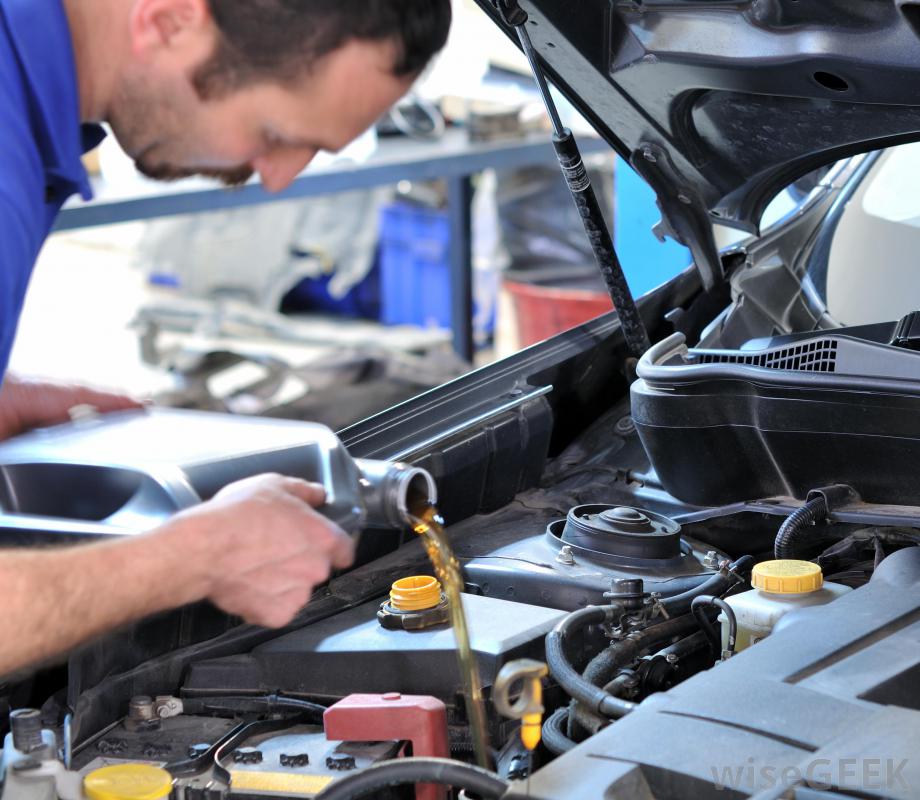
Engine oil consumption is a problem nobody wants. Most new engines today use less than half a quart of oil in 3,000 to 5,000 miles. Some use almost no oil. But as the miles accumulate, wear and oil consumption naturally go up.
Using a quart of oil every 1,000 to 1,500 miles is not unusual for a high mileage engine. The amount of oil used is still acceptable, but by the time it reaches a quart of more in 500 miles it’s using a LOT of oil. Blue smoke in the exhaust is a classic sign that an engine is burning too much oil.
Should you be concerned? It depends on your budget, the value of your vehicle, if you can afford to rebuild or replace the engine, and whether the oil consumption is causing other problems.
An engine that burns oil will usually foul the spark plugs. That, in turn will cause ignition misfire, higher emissions and likely damage the catalytic converter. Also, an engine that is burning oil usually won’t pass an emissions test because of elevated hydrocarbon (HC) emissions.
High 0il consumption due to burning will also sho9rten the service life of the oxygen sensors and catalytic converter, even with today’s low zinc-phosphorus motor oils. Phosphorus will contaminate these parts and cause the O2 sensors and/or converter to fail.
If an engine is using oil because of leaks (valve cover gaskets, oil pan gasket, crankshaft end seals, etc.), the problem can be fixed by simply replacing the leaky gaskets. But if the oil consumption is internal, major engine repairs may be required to fix the problem.
CAUSES OF HIGH OIL CONSUMPTION
Oil consumption depends primarily on two things: the valve guides and piston rings. If the valve guides are worn, or if there’s too much clearance between the valve stems and guides, or if the valve guide seals are worn, cracked, missing, broken or improperly installed, the engine will suck oil down the guides and into the cylinders. The engine may still have good compression, but will use a lot of oil.
Heavy carbon deposits on the valves are caused by worn valve guides and seals.
If the oil burning is due to worn or broken rings, or wear in the cylinders, the engine will have low compression. The only cure here is to bore or hone the cylinders and replace the worn or broken piston rings
HIGH OIL CONSUMPTION IN SOME NEW VEHICLES
Oil burning can also occur if the cylinders in a newly rebuilt engine are not honed properly (too rough, too smooth, wrong crosshatch), or if the piston rings never fully seat. Auto makers plateau hone the cylinders so the rings will seat quickly. Plateau honing shaves the sharp peaks off the scratches in the cylinder wall after the initial honing so the finish will be similar to a broken-in cylinder. If the honing process is not done correctly, the rings may never seat. This is especially important on engines with aluminum alloy cylinders or hard coated (Nikasil) cylinders.
Also, many late model engines are factory-filled with low viscosity synthetic oil (5W-20, 0W-20, 0W-40, etc.) to reduce friction and improve fuel economy. Low viscosity oil is thinner so it can leak past rings and valve guide seals easier than heavier viscosity oils. Synthetic oil is a great lubricant for all types of driving but it is NOT a good break-in oil – especially if the cylinders were not honed properly.
Most aftermarket engine builders break-in new engines with a conventional non-detergent SAE 30W or 10W-30 motor oil or a special break-in oil. Once the piston rings have seated (a process that can take 45 minutes to an hour or more on a dyno, or several hundred miles of normal driving if the engine is broken-in in the vehicle), the break-in oil is drained and the engine is refilled with what ever oil will be used for normal driving (conventional or synthetic).
Excessive oil consumption in a new engine can also be caused by assembly mistakes. The piston rings may not seat or seal properly if the rings are installed upside down, twisted into the piston ring grooves (which will bend and distort the rings), or the installed ring end gaps are too large or are not staggered to reduce blowby.
There’s no easy fix for improperly honed cylinders or incorrectly installed rings other than to rebuild or replace the engine – an expensive fix that most car manufacturers want to avoid. So if your new car dealer tells you high oil consumption is “normal,” they are full of BS! A late model engine that has been honed and assembled correctly should use less than a half a quart of oil between normal oil changes (and that includes engines that specify oil changes every 5,000 to 7,500 miles!).
HOW TO REDUCE OIL CONSUMPTION IN HIGH MILEAGE ENGINES
There are also “high mileage” motor oils that are specially formulated with extra additives to slow oil consumption. Switching to a high mileage oil the next time you change oil may help reduce oil leaks and burning.There are no “miracle” engine treatments or pills that will stop oil burning or magically restore worn cylinders and rings. But some crankcase additives can slow oil burning, although they won’t stop it entirely.
Switching to a heavier viscosity motor oil may also help reduce oil consumption. Try moving up one viscosity grade the next time you change oil. If your engine currently uses a 5W-20, switch to a 5W-30 or maybe a 10E030 oil. If you drive an older vehicle that uses 10W-30 oil, try a 10W-40 or possibly a 15W-40 or 20W-40 (but only for warm weather driving because 15W-40 and 20W-40 may be too thick for cold weather starting and lubrication).
If your engine is using oil because of a leak, the leak must be fixed to stop the loss of oil. Sometimes all that’s necessary is to retighten the valve cover or pan gasket mounting bolts because they can loosen over time. But if the gaskets are crushed and have lost their elasticity, you will need new gaskets. Valve cover, timing cover and oil pan gaskets are usually not too difficult to replace, but leaky crankshaft end seals can require a lot of disassembly (particularly the rear main crankshaft oil seal).
One alternative to replacing a leaky gasket or seal is to add a bottle of “seal conditioner” to the crankcase, or to switch to a “high mileage” motor oil. The seal conditioner additives in these products soak into old gaskets and seals and cause them to swell slightly. Hopefully, this will slow or seal the leak.
If the engine is using oil because of worn valve guides or valve guide seals, it is possible to replace just the valve guide seals without having to remove the cylinder heads or overhaul the engine. New valve guide seals can drastically reduce oil consumption. I have seen older high mileage engines go from using a quart of oil every 500 miles to using no oil between oil changes (3000 miles) by simply replacing the valve guide seals!
Replacing the valve stem seals requires a special valve spring compressor to disassemble the valve springs on each cylinder (one at a time). Remove the valve cover and all of the spark plugs. The piston in the first cylinder must then be placed at top dead center. This can be done by rotating the engine with a wrench on the crankshaft pulley until the timing marks line up. If the engine has no timing marks, insert a plastic straw into the cylinder through the spark plug hole so you can feel the piston as it approaches top dead center.
The cylinder must then be pressurized with compressed air through the spark plug hole to prevent the valves from dropping down into the cylinder when the valve springs and retainers are removed. Another trick for holding the valves in place is to snake a piece of rope or rubber tubing into the combustion chamber through the spark plug hole when the piston is at top dead center. The rope will fill the void between the piston and valves to hold the valves in place while you change the seals.
Be careful, because if a valve accidentally drops down into the cylinder, the cylinder head will have to come off the engine
SOURCE: aa1car
